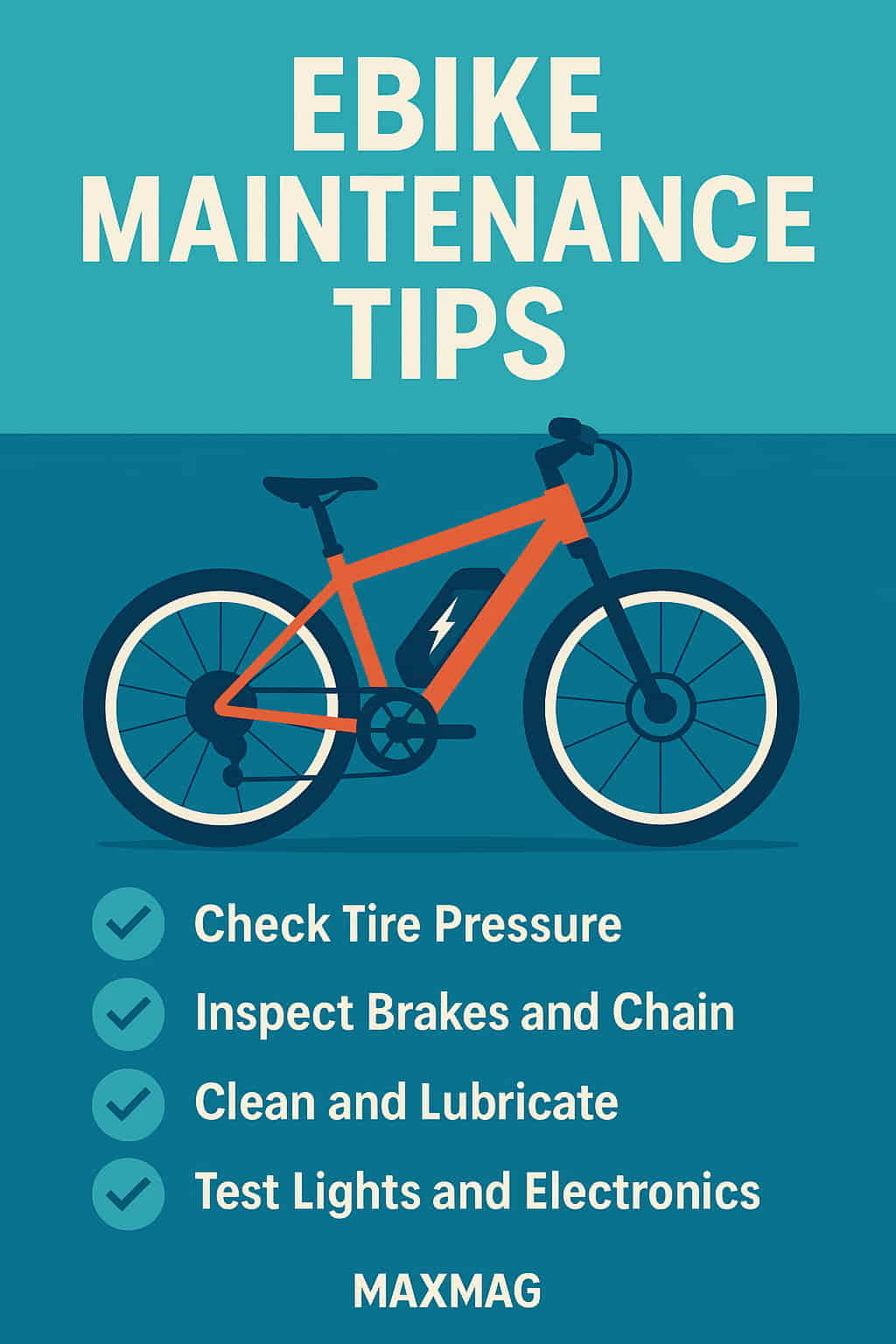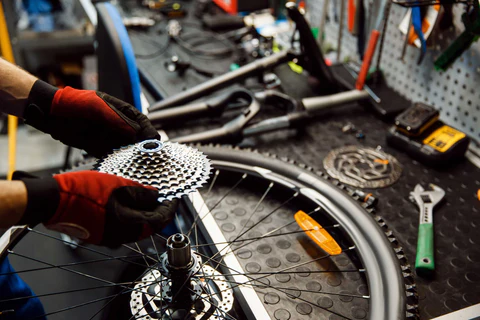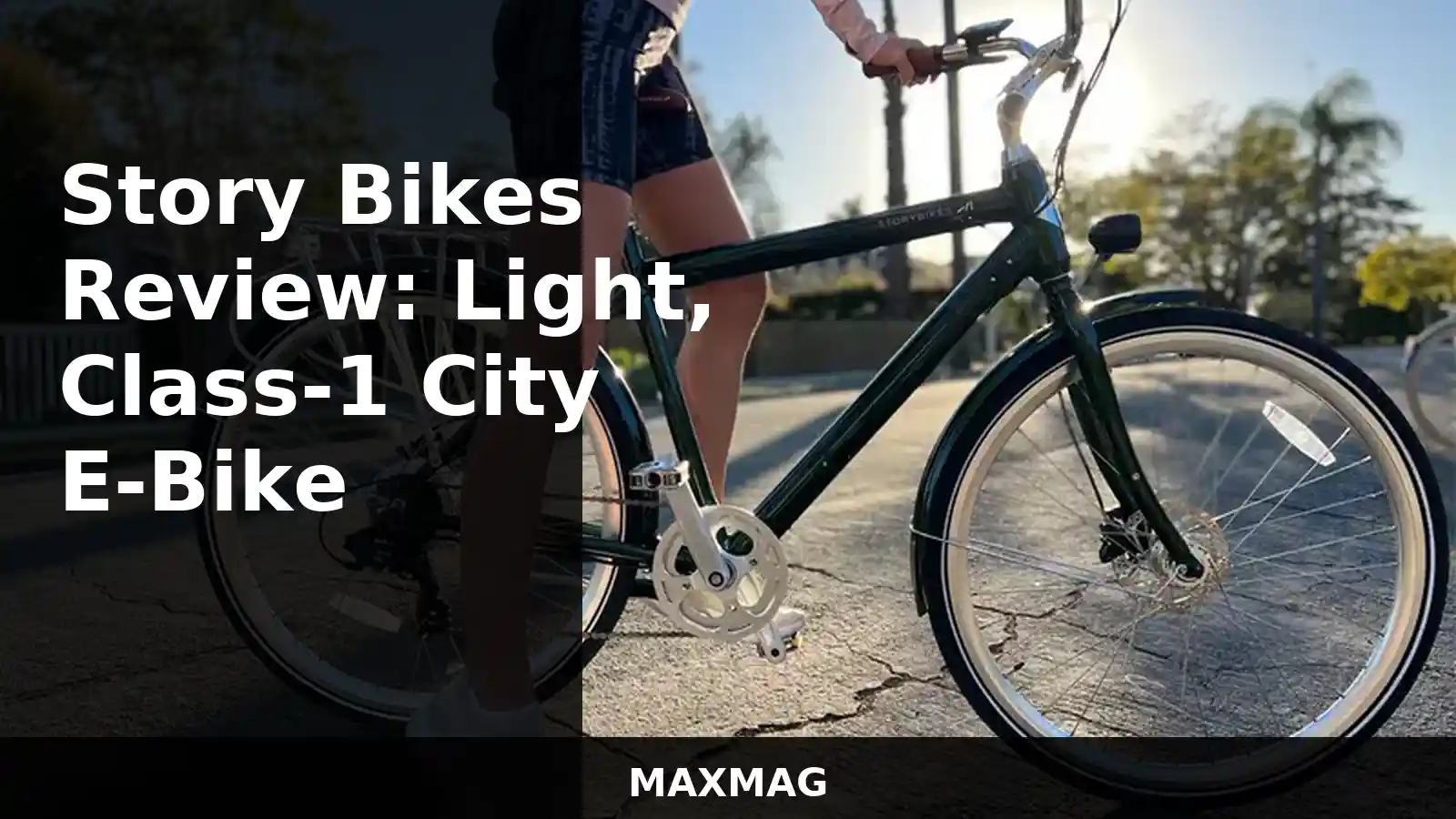
Electric bikes have come a long way. They’re faster, smarter, and more reliable than ever. But to keep them running at their best, a little regular care goes a long way. Whether you commute daily or ride just on weekends, learning the right ebike maintenance tips will help extend the life of your bike, improve safety, and save you money on repairs.
In this 2025 guide, we’ll cover everything from battery care and brake checks to what tools you actually need—and what you don’t. These tips are easy enough for beginners but smart enough for seasoned riders.
If you’re new to e-bikes, check out our full breakdown of electric bike pros and cons before diving into upkeep. Now, let’s get your ride tuned up.
Why Ebike Maintenance Matters More Than Ever
An e-bike isn’t just a bicycle with a motor. It’s a hybrid of electrical and mechanical systems that work together—and when one thing is off, the whole ride can feel wrong.
Proper maintenance ensures:
-
Longer battery life
-
Fewer breakdowns
-
Safer riding
-
Higher resale value
-
Smoother performance overall
And with many models now costing $1,500–$4,000, basic maintenance is a small investment to protect a big purchase.
Essential Ebike Maintenance Tips (2025 Edition)
Let’s get into the core routines every e-bike owner should follow. These are broken into daily, weekly, monthly, and seasonal tasks.
✅ Daily or Every Ride
1. Check Tire Pressure
Low tires affect speed, range, and control. Use a pump with a pressure gauge and keep your tires inflated to the PSI printed on the sidewall.
-
Tip: Slightly underinflated tires grip better on wet roads but reduce efficiency.
2. Inspect Brake Function
Before heading out, test both brakes. Squeeze each lever and make sure they engage firmly without any grinding or delay. E-bikes are heavier and faster than normal bikes—brakes are critical.
-
If you hear squealing, clean the rotors with rubbing alcohol.
3. Look Over the Chain
The chain should move smoothly without skipping. If it’s dry or squeaky, wipe it down with a cloth and re-lube it lightly. Don’t overdo it—excess oil attracts dirt.
4. Quick Scan for Loose Bolts
Give your stem, handlebars, and crank arms a quick shake. If anything wiggles, tighten it gently. Vibrations from the motor and road can loosen components over time.
🔁 Weekly or Every 100 Miles
5. Clean the Frame and Drivetrain
Use a damp cloth to wipe down the frame, especially if you’ve ridden in the rain or through mud. A clean bike is easier to inspect and less likely to corrode.
Use a degreaser on the chain and cassette once a week, then re-lube.
6. Test Lights and Electronics
E-bikes with integrated lighting systems or displays should be checked weekly. Make sure your lights, sensors, and displays are functioning as expected.
If anything flickers or fails to respond, check your wiring connections and battery charge.
7. Inspect Battery Mounts and Terminals
Remove the battery (if detachable) and inspect the connection points. Look for rust, debris, or bent contacts. Wipe gently with a dry cloth.
Loose battery mounts can rattle and wear out faster, so tighten those if needed.
📅 Monthly or Every 250–300 Miles
8. Battery Health Check
Your battery is your e-bike’s most expensive component. Every month:
-
Fully charge and discharge it at least once (helps calibrate readings)
-
Store between 40–70% charge if unused for long periods
-
Keep it out of direct sun or freezing temps
Refer to the manufacturer’s guidelines or Energy.gov’s battery care page for best practices.
9. Adjust Gears and Derailleurs
If your gears start skipping or feeling clunky, inspect the derailleur alignment. Often, a tiny barrel adjustment on your shifter cable can bring smooth shifting back.
-
Tip: If unsure, a bike shop tune-up is usually under $50.
10. Inspect and Center Brake Calipers
Disc brakes can sometimes rub the rotor. Lift the bike, spin the wheel, and listen. If it’s dragging, you may need to center the caliper or reset your pads.
Many e-bike brake systems are hydraulic, which can be more sensitive to pad wear.
🌦️ Seasonal or Every 6 Months
11. Deep Clean + Full Inspection
At the change of each season (especially after winter), do a full clean and safety check:
-
Frame cracks
-
Motor noise
-
Drivetrain wear
-
Cable condition
A full tune-up at a bike shop every 6–12 months is smart—even for DIYers.
12. Check for Firmware Updates
Many modern e-bikes (like VanMoof, Bosch-powered bikes, and Specialized) offer firmware updates via a smartphone app. These can:
-
Improve battery efficiency
-
Fix software bugs
-
Update motor performance
If your bike has Bluetooth or Wi-Fi connectivity, check regularly for updates.
Tools You’ll Actually Use
You don’t need a full mechanic’s bench to maintain your e-bike. Start with these essentials:
-
Multitool with hex wrenches
-
Torque wrench (to avoid over-tightening bolts)
-
Bike-specific degreaser and chain lube
-
Floor pump with gauge
-
Soft cloths and brushes
-
Small screwdriver
-
Bike stand (optional but great for repairs)
Most of these are affordable and available through REI or your local shop.
Common Mistakes New Ebike Owners Make
Avoid these rookie moves:
-
❌ Overcharging the battery overnight, daily
-
❌ Hosing down electronics like a car (water pressure damages seals)
-
❌ Using WD-40 on chains or brakes
-
❌ Riding with loose bolts or low tires
-
❌ Skipping regular cleaning—dirt grinds down parts fast
Following even a basic checklist makes a huge difference in performance and lifespan.
Battery Lifespan: What to Expect and How to Stretch It
Most e-bike batteries last 3–5 years or 500–1,000 full charges, depending on how you treat them. Here’s how to get the most out of yours:
-
Don’t leave it plugged in for days
-
Store indoors between 50–75°F
-
Charge to 80–90% most of the time, not always 100%
-
Avoid running it to 0% too often
If you’re storing the bike for winter, charge it to around 60%, turn it off, and unplug everything.
How Ebike Maintenance Differs from Regular Bikes
While traditional bikes require less upkeep, electric bikes involve a few extras:
| Task | Regular Bike | Ebike |
|---|---|---|
| Motor diagnostics | ❌ | ✅ |
| Battery inspection | ❌ | ✅ |
| Firmware updates | ❌ | ✅ |
| Electrical systems | ❌ | ✅ |
| Brake wear rate | Moderate | Faster due to weight |
Because e-bikes are heavier and faster, parts wear differently—especially brakes, drivetrains, and tires.
When to Take Your Ebike to the Shop
DIY is great, but some tasks are better left to the pros. Go to a shop if:
-
You hear strange motor noises
-
Brakes feel spongy or unresponsive
-
The display glitches or shows error codes
-
You crash or drop the bike
Most bike shops now service e-bikes, especially Bosch, Shimano, and Bafang-powered systems.
FAQ: Ebike Maintenance Tips
Q: How often should I maintain my e-bike?
A: Do quick checks (tires, brakes, chain) before each ride, clean and lube weekly, and inspect electronics monthly.
Q: Can I use regular bike lube and degreaser?
A: Yes, just avoid anything too harsh. Stick with products labeled “bike-safe” and avoid WD-40 on moving parts.
Q: How do I store my battery during winter?
A: Charge to ~60%, turn off, and keep it in a dry room around 50–70°F. Don’t freeze or overheat it.
Q: Should I wash my e-bike with a hose?
A: Never use high-pressure hoses. Wipe it down with a damp cloth and soft brush instead.
Q: When should I replace my brake pads?
A: If you hear metal-on-metal scraping or notice a drop in stopping power, it’s time. Check every 500–700 miles.






